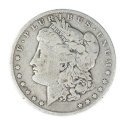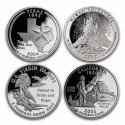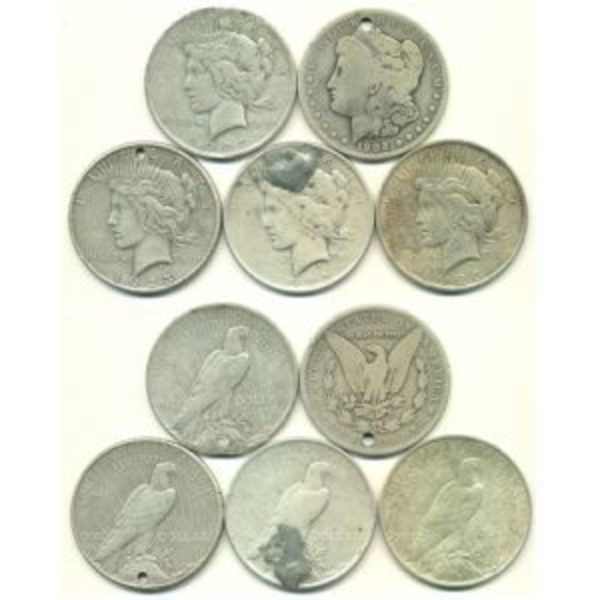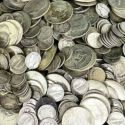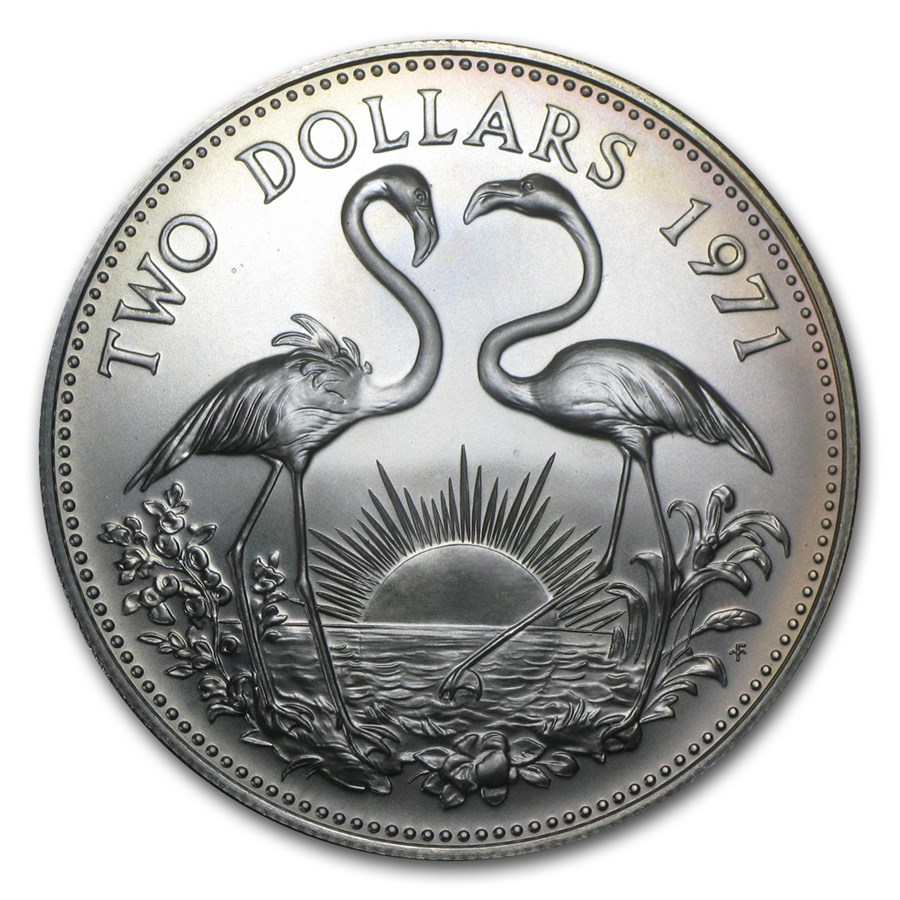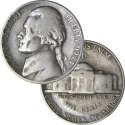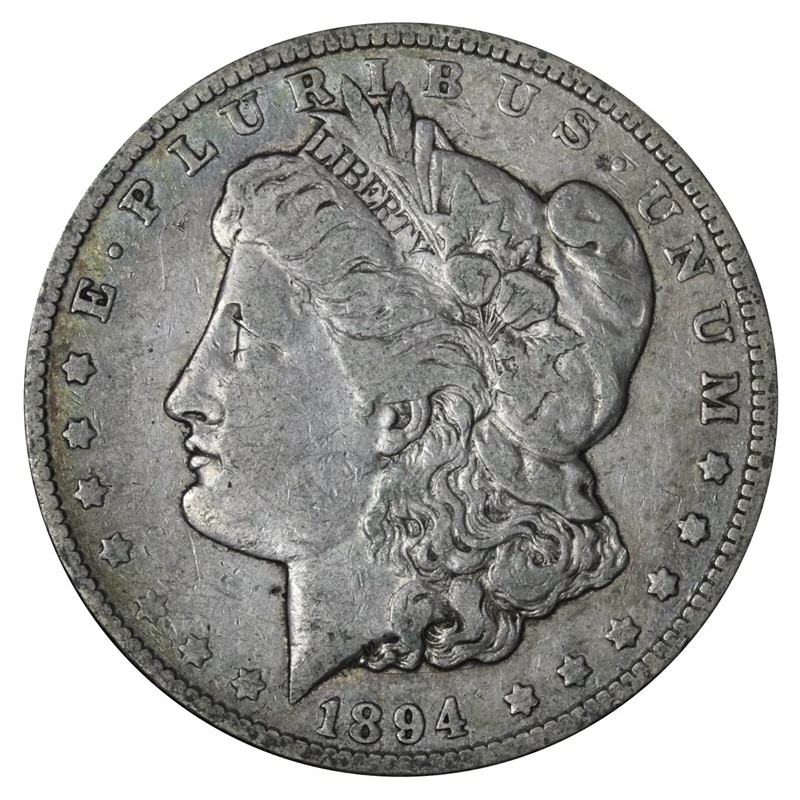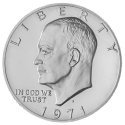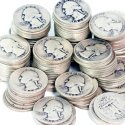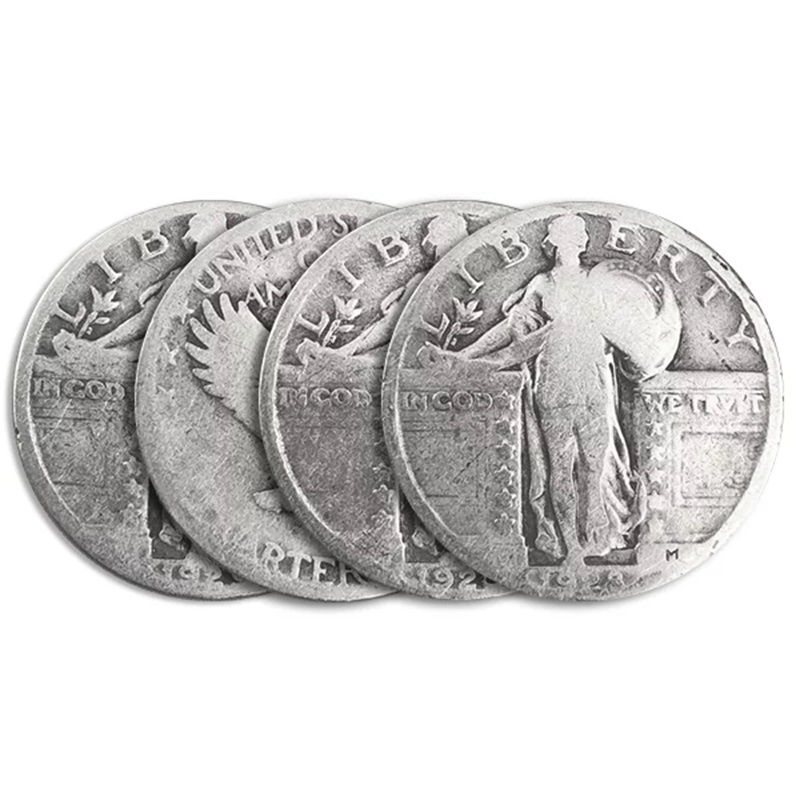1892-1916 Barber Dime Melt Value
Determining the current price of silver coins is a straightforward process once you know the silver content of the coin and the current market price, often referred to as the silver spot price.
US Mint Silver Coin Melt Values
| Description | Face Value | ASW | Melt Value | Per $1 Face | Per Bankroll | |
|---|---|---|---|---|---|---|
| Barber Dime | 1892-1916 Barber Dime | $0.10 | 0.0715 | $4.98 | $49.79 | $248.96 |
Barber Dime
The Barber Dime is was the ten-cent coin minted from 1892 to 1916. The coin is named after its designer, Charles E. Barber, the Chief Engraver of the U.S. Mint at the time. The overall Barber coinage series also included quarters and half dollars all sharing the same obverse design, with a similar reverse.the Barber Dime features a classical Liberty design on the obverse and a simple laurel wreath on the reverse.
The Barber Dime was minted at four mints: Philadelphia, Denver, San Francisco, and New Orleans. Over the years, many coins were heavily circulated, and finding examples in high-grade condition today can be challenging.
The Barber Dime is cherished by collectors because of its place in American coinage history and its classical design. The series offers a variety of key dates and mintmarks that provide challenges for collectors, making it both a historical and numismatic treasure.
With 90% silver content, Barber Dimes also hold intrinsic value as silver bullion and is frequently found amongst junk silver. This adds to their appeal as both a collectible and a form of precious metal investment.
Specifications and Design
- Obverse Design: The front side of the coin features Liberty wearing a Phrygian cap and a laurel wreath, with "LIBERTY" inscribed on the headband. Around the portrait is the inscription "UNITED STATES OF AMERICA" and the year of mintage at the bottom.
- Reverse Design: The reverse side depicts the denomination "ONE DIME" inside a laurel wreath. This design is simple and focused on emphasizing the value of the coin.
- Metal Composition: The Barber Dime is made of 90% silver and 10% copper, with a total weight of 2.5 grams and a diameter of 17.9 mm.
The Barber Dime series concluded in 1916 when it was replaced by the Winged Liberty Head Dime, more commonly known as the Mercury Dime.
Barber Dime Values
Many Barber Dimes are heavily worn, slick, or dateless because they were heavily used in circulation for decades. Coins in this condition are usually sold as junk silver because of the intrinsic value of the metal. However, when coins lose detail from wear, they may weigh slightly less than one in uncirculated condition.
- Good (G-4) - In Good condition, Barbers are still heavily worn but the outline of major features, such as Liberty’s head and the date, are still visible. Most Barber Dimes in this grade are valued for their silver content and its common to find them sold as "junk silver". Value Range: $3 to $10.
- Fine (F-12) - In Fine condition, more of Liberty’s hair and other details begin to emerge, though some wear is evident. These coins carry a slight numismatic premium and are usually valued in the $10 to $20 range.
- About Uncirculated (AU-50) - Coins in "About Uncirculated" condition exhibit minimal wear, mostly confined to the highest points of the design. Coins in almost uncirculated condition are popular with collectors and carry values from $75 to $150.
Key Dates and Rarities
The Barber Dime is cherished by collectors because of its place in American coinage history and its classical design. The series offers a variety of key dates and mintmarks that provide challenges for collectors, making it both a historical and numismatic treasure.
- 1894-S Barber Dime: This is one of the most famous rarities in U.S. coinage, with only 24 minted. Of those, fewer than ten are known to exist today, making it highly sought after by collectors. One example sold for over $1 million at auction.
- Other Key Dates: While the 1894-S is the rarest, other dates and mintmarks such as the 1895-O, 1901-S, and 1903-S are also considered more valuable, especially in higher grades.
Some collectors focus on buying junk Barber dimes for based on their silver weight. These coins are often heavily worn, but finding recognizable dates and mint marks in these lots can still add excitement.

